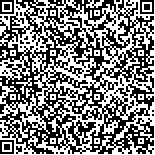下载中心
优秀审稿专家
优秀论文
相关链接
摘要

研究洞庭湖区垸内湖泊时空演变情况,本文利用1930年代以来10个时段的历史地形图和航天航空遥感数据,采用遥感解译、数据统计分析与历史对比方法,分析民国中期(1930年)以来各时段洞庭湖区垸内湖泊的空间分布特征、面积时序变化,利用2018年度基础性地理国情监测数据中内湖数据进行精度检验,精度达98.62%。结果表明:洞庭湖区内湖数量与面积分别从1938年的640个、994.30 km2增加到2018年的1057个、1578.33 km2,其变化过程并非呈持续增加趋势,而是经历了增加、减少、再增加的3个时序变化阶段,呈现波状起伏特征。民国中期(1930年)至建国初期(1958年),因通江湖泊大量围垦,内湖数量和面积均呈现快速增加趋势;其后,1959年—1978年,在“以粮为纲”的农业背景下,内湖被大量围垦,数量和面积萎缩至民国中期(1930年)以来的最低值;改革开放(1979年)以来,随着“退田还湖”和水产养殖等农业结构调整,内湖面积呈现大幅增加趋势。洞庭湖区垸内湖泊总体呈增加趋势,但不同规模、不同类型、不同区域等不同特征的垸内湖泊变化情况不同。总体而言,围湖垦殖是内湖形成的主要驱动,粮食保障与水产养殖是内湖变化的主要原因。研究成果可为洞庭湖区生态修复与环境保护提供客观资料。
In order to study the temporal and spatial evolution of inner lakes in Dongting Lake area, this paper uses remote sensing interpretation, data statistical analysis and historical comparison methods based on 10 periods of historical topographic maps and aerospace remote sensing data since 1930s. It analyze the spatial distribution and temporal change of inner lakes in Dongting Lake area since the middle of the Republic of China. The accuracy test is carried out by using the current land using database in 2018, with the accuracy reaching 98.62%. The results show that the number and area of inner lakes in Dongting Lake area have increased from 640 and 994.30 km2 in 1938 to 1057 and 1578.33km2 in 2018. The change process did not show a continuous increasing trend, but experienced an increase, decrease, and increase. The three phases of time series change show undulating characteristics. From the middle period of the Republic of China(1930) to the early days of the founding of the People’s Republic of China(1958), the number and area of the inner lakes showed a rapid increase trend due to the massive reclamation of rivers and lakes. After that, from 1959 to 1978, inner lakes were reclaimed in large numbers because of the agricultural policy of “take grain as the key link”, number and area of inner lakes shrunk to the their lowest values since the middle period of the Republic of China (1930). Since the reform of the People’s Republic of China(1979), with the adjustment of agricultural structure, aquaculture and “returning farmland to lake”, the area of inner lakes has shown a significant increase. The inner lakes in the Dongting Lake area show an overall increasing trend, but the changes in inner lakes with different scales, types, and different characteristics in different regions are different. Diveded by scale, the areas of forbidden inner lakes (area ≥1 km2) and non-forbidden inner lakes (<1 km2) showed an overall trend of simultaneous increase and decrease, but the area changes of forbidden inner lakes have significant phases; divded by type, the area of the residual inner lakes is obviously larger than that of the reservoir-like inner lakes and the dumb inner lakes, and its area accounts for more than 70% of the total area of the inner lake; divided by region, the change in the area of the inner lake in the original polder area is divided into two stages: a decrease period and an increase period, the area of the inner lake in the new polder area is on the rise as a whole, and it has experienced a process from scratch.In general, reclamation of the lake is the main driving force for the formation of inner lakes. Food security and aquaculture are the main reasons for the change of inner lakes. The deposition and over cultivation of inner lakes e pose a serious threat to the ecological environment of inner lakes. The research results can provide objective data for the ecological restoration and environmental protection of Dongting Lake area.

